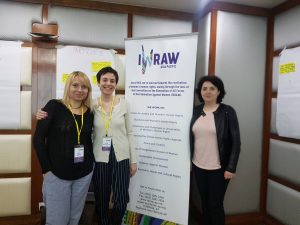Author: Dasha Matyushina, Drug Policy and Human Rights Advisor, EHRA
On March 8, 2018, the Council of Ministers of the European Union adopted final recommendations on alternatives to punishment for crimes committed by people who use drugs.
The adoption of such a document is an important event, especially given the fact it’s courtesy of one of the main bodies of the European Union. Official documents adopted at the highest level frequently mention alternatives to punishment for drug use and possession – for example, the resolution of the UN General Assembly Special Session on Drugs 2016, the EU Drug Strategy 2013-2020 and the latest EU Action Plan on drugs, adopted just over a year ago.
In fact, the idea is nothing new. Article 36 of the Single United Nations Convention on Narcotic Drugs of 1961, dubbed “Penal Provisions”, defines possible alternatives to punishment:
b) …when abusers of drugs have committed such offences, the Parties may provide, either as an alternative to conviction or punishment or in addition to conviction or punishment, that such abusers shall undergo measures of treatment, education, after-care, rehabilitation and social reintegration in conformity with paragraph 1 of article 38.
The 1988 UN Convention is similar in spirit and style – again we see the terms such as “alternatives to conviction or punishment” and “additional measures”. Law-makers in the USSR and later in the post-Soviet space opted for additional measures such as special prisons for drug addicts and various forms of compulsory treatment…
Is there a significant difference between the international provisions from 60 years ago and the recommendations discussed at the European level today? Why do we think that the international documents adopted over the past few years will somehow help reform drug policies?
First, it’s the official use of the word “alternatives”, which is important. It shows that there’s a consensus that it’s time to try out alternatives to traditional drug policy approaches. Also, the EU documents are gradually moving away from the idea of just “replacing or adding” (which, in fact, allows ample scope for drug prisons), giving clear priority to “replacing” sanctions with non-custodial measures.
Secondly, the EU speaks of alternatives to coercive measures. A fine is a coercive measure which means that a fine for drugs, even a small administrative penalty is not good, it’s a practice that should be replaced with an alternative.
The document adopted by the Council of the European Union in March of this year defines alternatives as follows:
(2) …as education, (suspension of sentence with) treatment, suspension of investigation or prosecution, rehabilitation and recovery, aftercare and social reintegration…
Please note that it’s not only the suspension of a sentence but also the suspension of an investigation and prosecution. That means that a decision to send a suspect for treatment or rehabilitation can occur at the time of arrest and before trial.
Another important point is that it’s not just and not so much about sanctions for drug use and possession for personal use, which, according to the document, is not considered “a criminal offense in many countries” (which, as we know, is not entirely true – in the Baltic countries for example possessing microscopic quantities can lead to a fine equal to several monthly salaries). The EU document talks about the whole spectrum of crimes committed by people who use drugs. Most often it’s about thefts committed in order to find money to buy drugs.
The most important thing about the latest EU document is that it recognizes (rather than simply raises the issue for further research) that alternative measures are more effective in reducing repeat offences and social spending, as well as help improve social reintegration.
So, in general, the EU adopted a useful document. It won’t lead to a paradigm shift or a revolution in drug policy; however it will help advocacy effort at the EU and international levels. Our task is to pick quotes from it and target our governments, especially those who still believe that fines and drug prisons are the alternatives to punishment.



